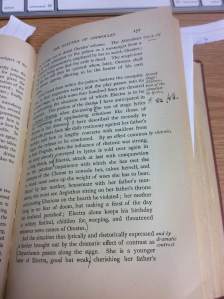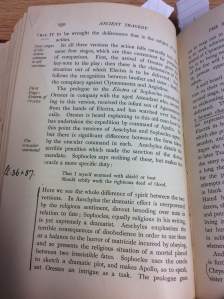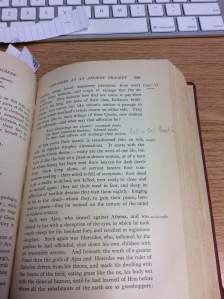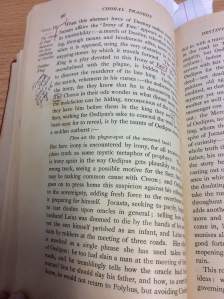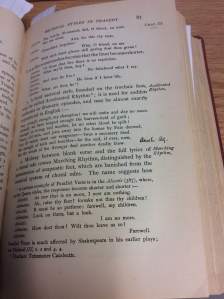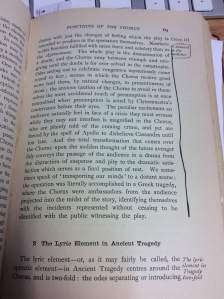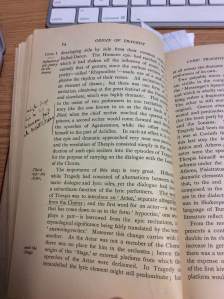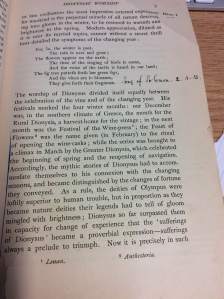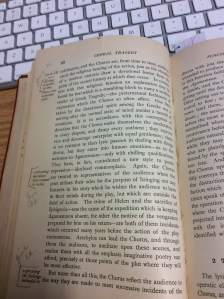I have found some marginalia traces in the book Ancient Classical Drama from Richard G. Moulton. It was printed in 1898 by the Oxford Publisher at the Clarendon Press especially to the University of Oxford. The author was a English Literature professor at the University of Chicago, that also worked at the Cambridge University. The book talks about the origins and evolutions of the greek drama, well known as classical drama. The book analyzes both the Tragedy and Comedy styles, as well as the Modern Romantic Drama. There are a lot of fragments of greek plays along the book.
The traces are comments about the text, sometimes about the authors of the greek plays or even a reference to a previous page or another artwork. It seems that the same reader wrote most of the notes. We can recognize the same black pen, the same cursive handwriting and the Spencerian style. Some traces of this style that can be found in this book are the darker and lighter letters and the clear distinction between capital and lowercase letters, especially on the annotation “Songs of Solomon 2.11-13”.
Other marginalia notes were made by pencil. Though, it seems like the same reader has written them. It is suggested because those pencil traces usually are used to circle informations or to indicate examples. Moreover, they are usually together with traces made by the characteristic black pen. Therefore, it seems like that the pencil was used to highlight minor informations, such as complements to the pen highlights.
The project Book Traces encourages everyone to contribute uploading 19th century books that we find in a library and contains notes written in that period. So that, everybody can contribute to enlarge this digital archive, that can preserve the endangered books and help scholars and interested people. The platform just allows to upload five photos, so I will use the blogpost to show also the ones that I can’t include in the archive.
1 and 2) ll.36 + 37. / P. 82 (page 150, 151)
(It means: line number 36 +37 / the reader relates the fragment to another on page 82)
3) Act V. Sc I. Doct[or] (page 229)
(“Sc” means scene)
4) ____ I took from this page PLUS page 97! (pages 96, 97)
5) Aesch. Ag. (page 87)
(It means: The reader thought that the fragment of Alcestis sounded like a play from Agamemnon, a play from Aeschylus. Indeed, Moulton compares the two plays on the next page.)
6) highlight and circle around information (page 69) (related to photo 9)
7) ___aigh says [th]ere no [e]vidence for [su]ch recitations? (page 14)
8) Song of Solomon 2.11-13 (page 7)
9) give ex. / give ex. (Page 68) (related to photo 5)
